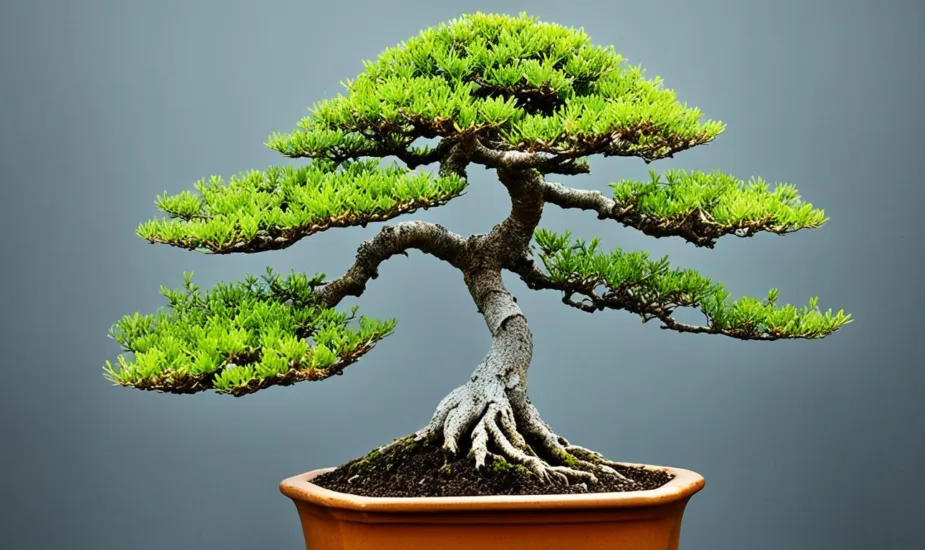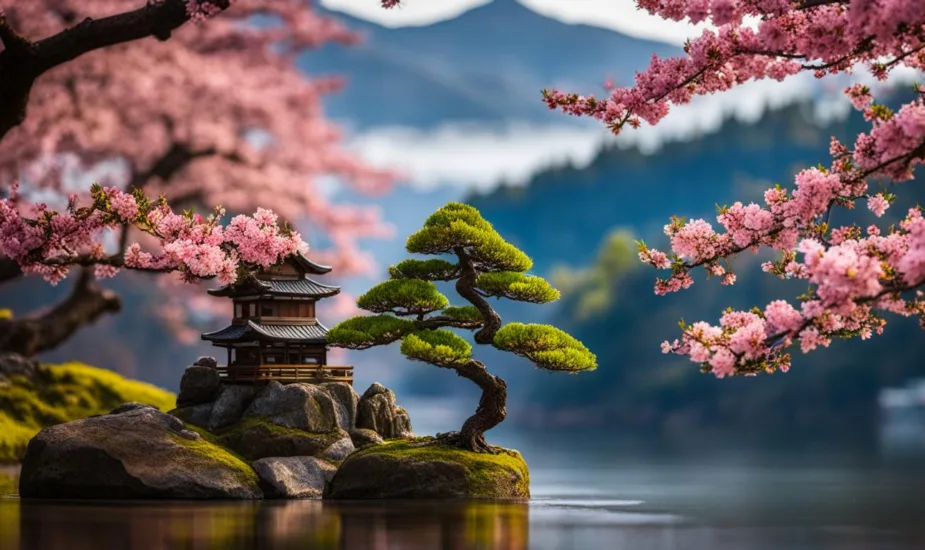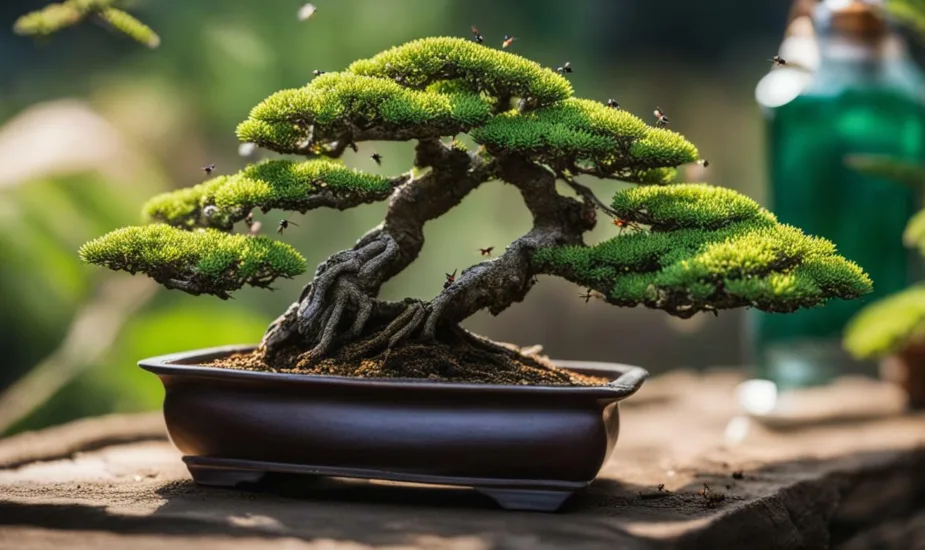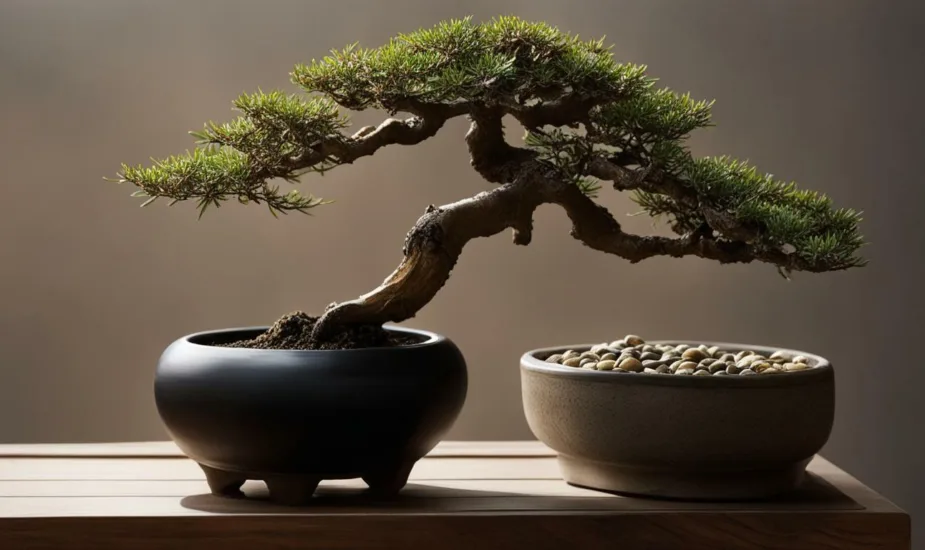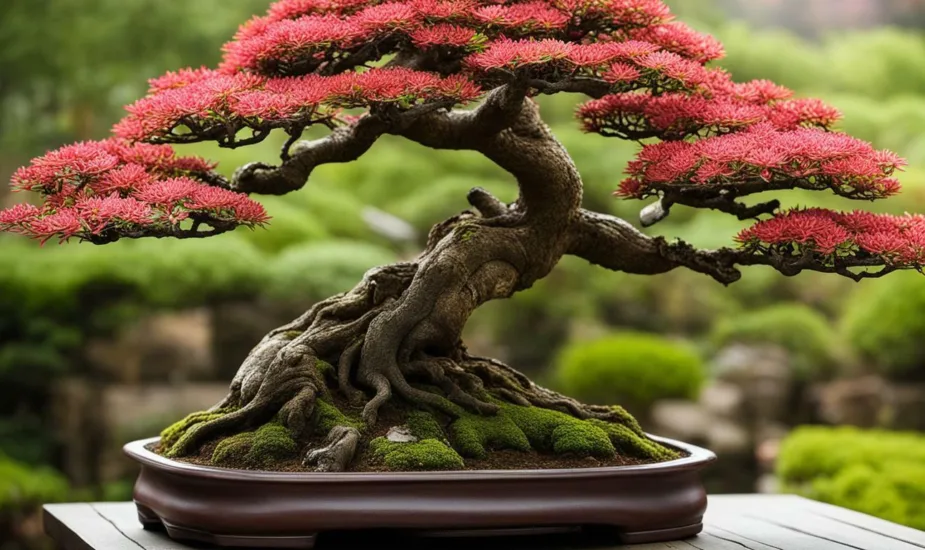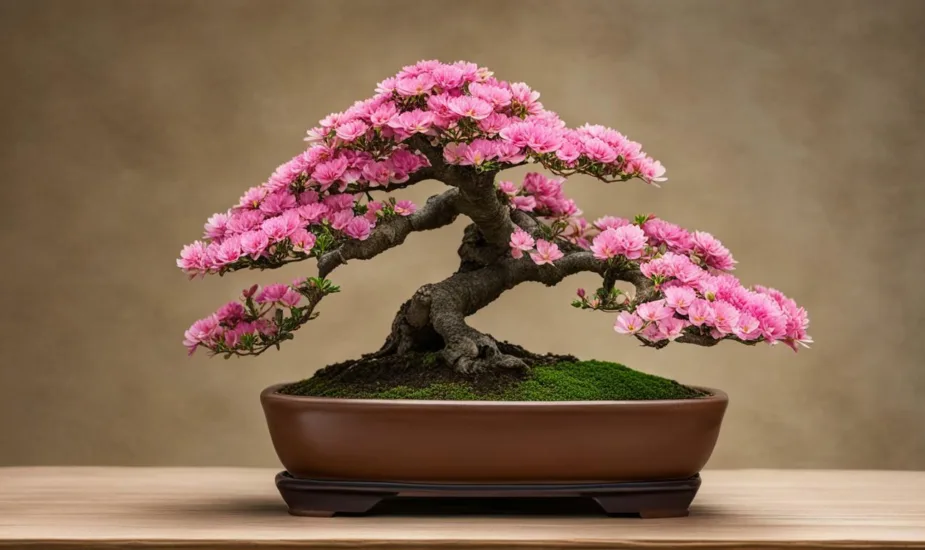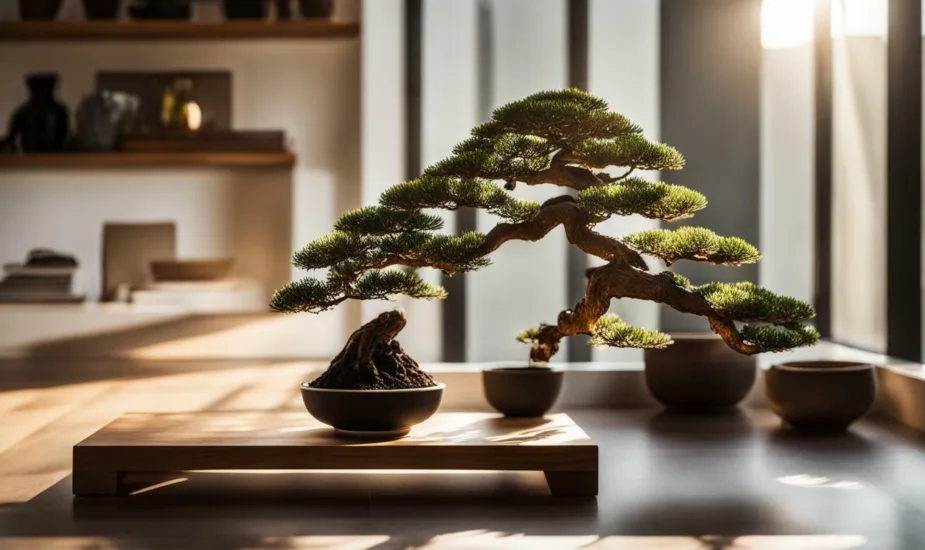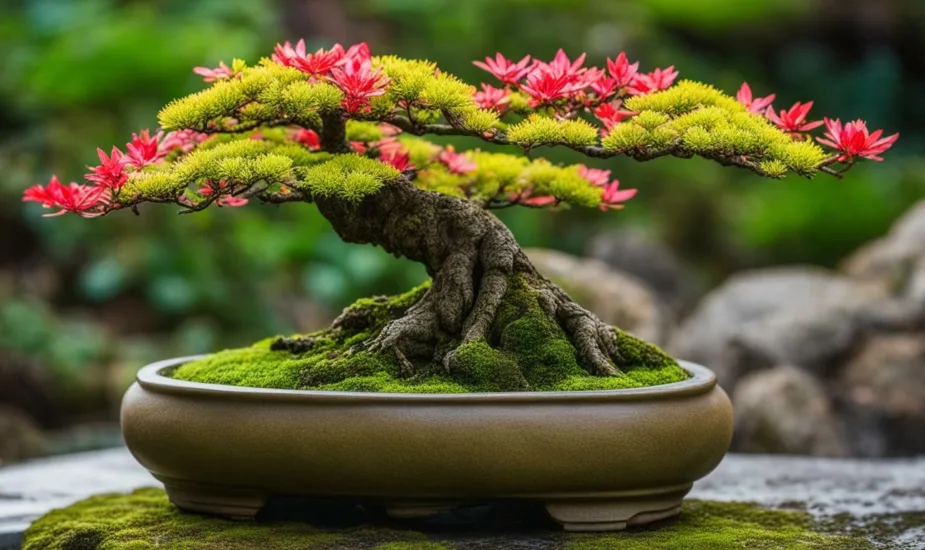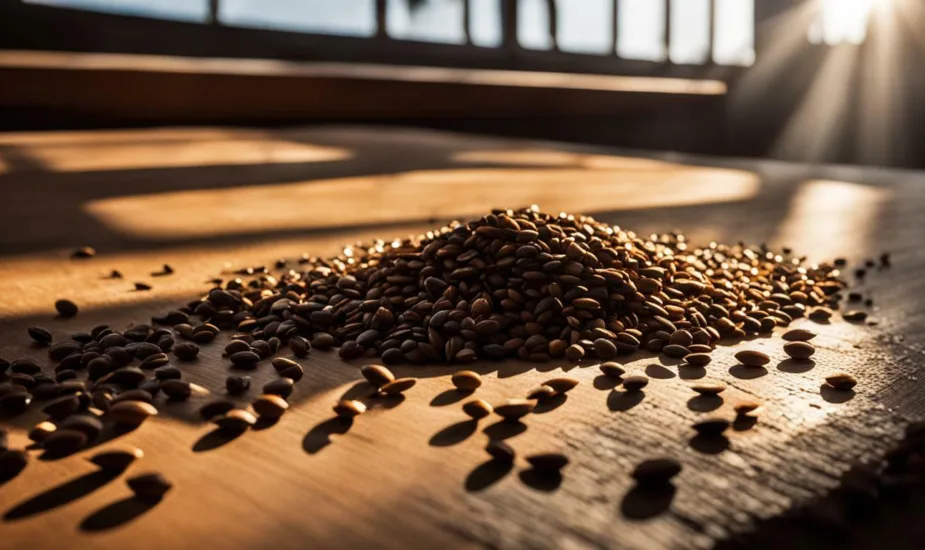Unlocking the Mystery: Are Money Trees Bonsai?
Money trees have gained popularity as houseplants, but are they truly considered bonsai trees? In this article, I will delve into the fascinating world of money tree bonsai and explore their symbolism, origins, care requirements, and cultural significance. Whether you're a bonsai enthusiast or simply curious about these unique trees, join me as we unlock the mystery of money trees and discover their true nature.

Understanding Money Trees: Symbolism and Origins
Money trees, scientifically known as Pachira aquatica, are not only beautiful ornamental plants but also carry symbolic significance in many cultures. These trees, often referred to as money tree bonsai, have gained popularity as a symbol of prosperity, luck, and aesthetic beauty. Originating from Central and South America, money trees are cultivated to remain compact and miniature, making them ideal for bonsai collections.
In the practice of Feng Shui, the money tree is considered a powerful symbol of good fortune and wealth. It is believed to bring positive energy and financial success to the owner. This belief has made money tree bonsai a sought-after plant for those looking to enhance prosperity and abundance in their lives.
When cultivating a money tree bonsai, there are several factors to consider to ensure its health and well-being. One crucial aspect is size, as maintaining the desired size is essential for the bonsai aesthetic. Additionally, ensuring the tree’s health requires proper care, such as regular watering, fertilization, and providing adequate light and temperature conditions. Braiding the trunks of money tree bonsai is a technique that adds a unique touch to their appearance, creating an intriguing visual effect.
“The money tree bonsai represents prosperity and luck, making it a popular choice among bonsai enthusiasts.”
Potting and soil play a significant role in the growth and development of money tree bonsai. These trees should be potted in shallow containers with well-draining bonsai soil mix to prevent waterlogged roots. Choosing the right potting container and soil composition ensures proper root development and promotes overall plant health.
Pruning and shaping techniques are essential for maintaining the bonsai form of money trees. Regular pruning helps control growth, promotes branch density, and enhances the overall shape and aesthetics of the tree. It is important to prune with care and precision to avoid damaging the tree.
Best Money Tree Bonsai Care Practices
- Watering: Money tree bonsai should be watered thoroughly, allowing the soil to dry slightly between waterings. Avoid overwatering, as it can lead to root rot.
- Light and Temperature: Place the money tree bonsai in a location with bright, indirect light. It thrives in temperatures between 65-75°F (18-24°C), away from drafts or extreme heat.
- Fertilization: Feed the money tree bonsai with a balanced, water-soluble fertilizer during the growing season to ensure proper nutrition.
Repotting is necessary every 2-3 years to replenish the soil and stimulate root development. Carefully repotting the tree in fresh bonsai soil mix allows for continued growth and vitality.
Money trees hold cultural significance in Taiwanese, Chinese, and Japanese traditions. They are often associated with luck, wealth, and prosperity in these cultures. In addition to their symbolic meaning, money tree bonsai have gained popularity among bonsai enthusiasts for their unique and captivating appeal. They are sought after as decorative pieces, gifts, and collectibles.
Overall, money tree bonsai offer not only a beautiful addition to any space but also a symbol of abundance and luck. Their captivating appearance, combined with their cultural significance, has made them a desirable choice for bonsai lovers worldwide.

Growing a money tree bonsai requires attention to detail and specific techniques to achieve the desired result. These miniature trees, scientifically known as Pachira aquatica, are symbols of prosperity, luck, and aesthetic beauty. While indigenous to Central and South America, they are cultivated to remain compact and miniature for bonsai collections.
When it comes to cultivating a money tree bonsai, several factors need consideration, including size, health, and braiding. To maintain the desired size, the tree should be pruned regularly. Pruning not only controls growth but also helps shape the bonsai form. It is essential to use sharp and clean pruning tools to prevent damage to the tree.
In terms of health, proper watering, fertilization, and suitable light and temperature conditions are essential. Money tree bonsai prefer bright, indirect light and thrive in temperatures between 65-75°F (18-24°C). It is crucial to water them thoroughly, allowing the soil to dry slightly between waterings to avoid overwatering.
Braiding is a technique often used to add an aesthetic touch to money tree bonsai. By braiding the trunks, it creates an interesting and unique visual appeal. This technique requires patience and skill, as the trunks need to be trained slowly over time. It is recommended to start braiding when the trunks are young and flexible.
Throughout the cultivation process, it is important to monitor the tree’s health and address any issues promptly. Common challenges include yellowing and drooping leaves, pest infestations, and fungal diseases. Regular inspection, proper care, and timely interventions can help maintain a healthy money tree bonsai.

| Factors to Consider for Cultivating Money Tree Bonsai | Care Techniques |
|---|---|
| Size | Regular pruning to control growth and shape the tree. |
| Health | Proper watering, fertilization, and providing suitable light and temperature conditions. |
| Braiding | Train the trunks slowly over time to create an interesting visual appeal. |
In summary, cultivating a money tree bonsai requires careful attention to size, health, and braiding. Pruning and shaping techniques help maintain the bonsai form, while proper watering, fertilization, and providing suitable light and temperature conditions are essential for its health. Braiding the trunks adds an aesthetic touch to the bonsai. With dedication and patience, anyone can create a stunning money tree bonsai that brings prosperity, luck, and beauty to their lives.
Potting and Soil: The Key to Thriving Money Tree Bonsai
Proper potting and the right soil mix are essential elements for the successful cultivation of money tree bonsai. Money trees, scientifically known as Pachira aquatica, are a type of bonsai tree that symbolize prosperity, luck, and aesthetic beauty. To ensure the health and longevity of your money tree bonsai, it is crucial to choose the appropriate potting container and soil composition.
When potting a money tree bonsai, it is recommended to use a shallow pot with good drainage to prevent waterlogging. This allows excess moisture to drain out, preventing root rot and other soil-related issues. Additionally, a shallow pot helps maintain the compact size and bonsai form of the tree.
The soil mix for money tree bonsai should be well-draining and aerated to promote healthy root development. A suitable soil mix consists of a combination of organic matter, such as peat moss or coco coir, and inorganic components like perlite or pumice. This blend ensures proper water retention while allowing excess water to drain away, preventing waterlogging.
| Organic Components | Inorganic Components |
|---|---|
| Peat moss | Perlite |
| Coco coir | Pumice |
The organic components in the soil mix provide essential nutrients and retain moisture, while the inorganic components aid in drainage and prevent soil compaction. It is important to maintain a well-balanced soil composition to ensure optimal growth and health of your money tree bonsai.

By potting your money tree bonsai in the right container and using a suitable soil mix, you create an ideal environment for its growth and development. With proper potting and soil, your money tree bonsai will thrive and bring you joy with its lush foliage and symbolic meaning.
Pruning and Shaping: Maintaining the Bonsai Form
Pruning and shaping play vital roles in keeping money tree bonsai looking their best and maintaining their desired form. By selectively trimming branches and foliage, you can control the growth and create a visually appealing bonsai tree. Regular pruning encourages new growth and helps develop the bonsai’s characteristic compact and miniature appearance.
When pruning a money tree bonsai, it is important to use sharp and clean pruning shears to avoid causing unnecessary damage to the tree. Start by removing any dead or damaged branches, cutting them at the base where they meet the trunk. Then, assess the overall shape of the bonsai and trim back any branches that are growing too long or crossing each other.
In addition to pruning, shaping techniques such as wiring can be used to guide the branches into the desired position. Carefully wrap the wire around the branches and gently bend them into the desired shape. Be cautious not to apply too much pressure that could cause the branches to break or snap. Over time, as the branches set in their new position, the wire can be removed.
Expert Tip: Pruning for Balance
“When pruning your money tree bonsai, always aim for balance. Trim back branches on one side to create a more symmetrical appearance. This ensures that your bonsai remains visually appealing from all angles.” – Bonsai Master
| Pruning Tips | Shaping Techniques |
|---|---|
|
|
Pruning and shaping your money tree bonsai not only maintains its desired form but also helps stimulate new growth and overall health. Take your time and approach pruning with care and precision to achieve the best results.

Providing the right environment and care is crucial for the long-term health and vitality of money tree bonsai. Watering is a fundamental aspect of bonsai care, and it is essential to strike a balance between underwatering and overwatering. Money tree bonsai should be watered when the top inch of the soil feels dry, but it is important not to let the soil completely dry out. As a rule of thumb, watering once or twice a week should be sufficient, but the frequency may vary depending on factors such as climate, pot size, and tree size. When watering, make sure to thoroughly saturate the soil, allowing excess water to drain, as stagnant water can lead to root rot.
Another crucial aspect of caring for money tree bonsai is providing suitable light and temperature conditions. Money trees thrive in bright, indirect sunlight. Placing the bonsai near a window or in an area where it receives filtered light throughout the day is ideal. Avoid exposing it to direct sunlight, as this can lead to leaf burn. Additionally, money tree bonsai prefer temperatures between 60-75°F (15-24°C). It is important to protect the tree from extreme cold or heat, as it can damage the foliage and overall health of the bonsai.
Fertilization is another key factor in maintaining the health and vigor of money tree bonsai. Using a balanced, organic bonsai fertilizer can provide the necessary nutrients for optimal growth. It is recommended to fertilize the bonsai every 2-4 weeks during the growing season, which is typically spring through summer. Be sure to follow the instructions on the fertilizer package and avoid overfertilizing, as this can lead to nutrient burn and damage to the tree. During the dormant period in winter, reduce or eliminate fertilization to allow the tree to rest.
| Watering: | Light and Temperature: | Fertilization: |
|---|---|---|
|
|
|
As with any bonsai, money tree bonsai may encounter certain challenges. Yellowing and drooping leaves can indicate overwatering, while dry and crispy leaves may be a sign of underwatering. Pest infestations, such as spider mites or scale insects, can be addressed with insecticidal soap or neem oil. Fungal diseases, like root rot or powdery mildew, can be prevented by providing proper drainage and avoiding excessive humidity. Regular inspection and prompt action can help maintain the health and vitality of your money tree bonsai.

“The key to a thriving money tree bonsai lies in providing the perfect balance of water, light, and nourishment.” – Anonymous
Repotting: Stimulating Growth and Development
Regular repotting is necessary to ensure the continued growth and development of money tree bonsai. Repotting serves multiple purposes, including replenishing the soil, promoting root development, and providing a fresh environment for the tree to thrive. Ideally, money tree bonsai should be repotted every 2-3 years.
When repotting a money tree bonsai, it is crucial to choose a shallow pot that allows for proper drainage. The pot should be slightly larger than the tree’s root mass to provide enough space for new growth. Before repotting, carefully remove the tree from its current pot, being mindful not to harm the delicate roots.
When repotting, it is essential to use a well-draining bonsai soil mix. The soil should be airy and provide adequate moisture retention while preventing waterlogging. A suitable soil mix for money tree bonsai consists of a combination of akadama, pumice, and lava rock. Fill the new pot with the bonsai soil mix, positioning the tree in the center and spreading out the roots evenly.
After repotting, thoroughly water the tree to ensure the soil settles around the roots. Place the repotted money tree bonsai in a sheltered area with filtered sunlight to allow it to recover from the transplant shock. Avoid direct sunlight for a few weeks after repotting to prevent stress on the tree. Regular watering and monitoring of the tree’s health are critical during this period.
| Benefits of Repotting Money Tree Bonsai |
|---|
| Promotes root development |
| Replenishes the soil |
| Stimulates growth and overall health |
| Provides a fresh environment for the tree |
Overall, repotting is a crucial aspect of caring for money tree bonsai. It helps stimulate growth, development, and overall health, ensuring the tree’s long-term prosperity. With regular repotting and proper care, your money tree bonsai will continue to flourish and bring beauty and prosperity to your bonsai collection.
The process of repotting not only provides essential nutrients and space for root development but also helps prevent the tree from becoming root-bound, which can hinder its growth and overall health. Regular repotting is a key practice in maintaining the vitality of money tree bonsai.
Cultural Significance and Popularity of Money Tree Bonsai
Money tree bonsai holds cultural significance in various traditions and has become a sought-after choice for bonsai enthusiasts. These unique miniature trees, scientifically known as Pachira aquatica, have their origins in Central and South America but have gained popularity worldwide. In Taiwanese folklore, the money tree is believed to bring good luck and fortune, making it a common houseplant in many households.
In Chinese culture, the money tree symbolizes wealth, prosperity, and abundance. It is often displayed in homes and businesses to attract good fortune and financial success. Similarly, in Japanese traditions, the money tree bonsai is considered a symbol of luck and is believed to bring positive energy to its surroundings. The rich cultural significance behind money tree bonsai has contributed to its growing popularity as a cherished bonsai species among enthusiasts.
When searching for money tree bonsai for sale, there are various options available, including local nurseries, online retailers, and bonsai specialty stores. It’s important to choose a reputable seller who provides healthy and well-cared-for bonsai trees. Additionally, consider the specific care requirements of money tree bonsai to ensure its long-term success in your care.
As with any bonsai tree, maintaining the ideal size, health, and aesthetic form of a money tree bonsai requires proper care and attention. This includes potting in a shallow container with well-draining bonsai soil, regular pruning and shaping to achieve the desired form, and providing suitable light, temperature, and watering conditions. Repotting every 2-3 years stimulates root development and replenishes the soil for optimal growth. It’s essential to address any challenges such as yellowing leaves, pest infestations, or fungal diseases promptly to maintain the health and beauty of your money tree bonsai.

- Money tree bonsai holds cultural significance in Taiwanese, Chinese, and Japanese traditions.
- It is believed to bring good luck, wealth, and prosperity.
- Money tree bonsai is popular among bonsai enthusiasts worldwide.
- When purchasing a money tree bonsai, choose a reputable seller.
- Proper care includes potting, pruning, and providing suitable light, temperature, and watering conditions.
- Address any challenges promptly to maintain the health and beauty of your money tree bonsai.
The Allure of Money Tree Bonsai: Prosperity and Beauty
Money tree bonsai offers a captivating blend of cultural symbolism, good fortune, and visual appeal, making them a desirable addition to any bonsai collection. These miniature trees, scientifically known as Pachira aquatica, are native to Central and South America but are cultivated to remain compact in size. In many cultures, they are regarded as a symbol of prosperity and wealth, making them popular in Feng Shui practices.
When cultivating a money tree bonsai, it is important to consider several factors. The size, health, and braiding technique play a significant role in shaping these trees into beautiful bonsai forms. To ensure their well-being, money tree bonsai should be potted in shallow containers with well-draining bonsai soil mix. This allows for proper root development and prevents waterlogged soil.
Pruning and shaping techniques are essential to maintain the desired bonsai form. Regular pruning helps control the size and shape of the tree, while shaping techniques add artistic appeal, allowing the tree to resemble older, majestic specimens. Adequate watering, suitable light and temperature conditions, and proper fertilization are crucial for the overall health of the money tree bonsai.
Repotting every 2-3 years stimulates growth and helps replenish the soil, ensuring the optimum health of the bonsai. However, it is important to carefully monitor the tree’s health to detect and address common challenges such as yellowing and drooping leaves, pest infestations, and fungal diseases.
Beyond their horticultural significance, money trees hold cultural importance in Taiwanese, Chinese, and Japanese traditions. They are also highly sought after by bonsai enthusiasts for their symbolic meaning and aesthetic appeal. Although not typically consumed as food, money trees have edible seeds and flowers.
FAQ
Q: Are money trees considered bonsai trees?
A: Yes, money trees, scientifically known as Pachira aquatica, can be cultivated as bonsai trees. They are often kept compact and miniature for bonsai collections.
Q: What does a money tree symbolize?
A: Money trees symbolize prosperity, luck, and aesthetic beauty. In Feng Shui, they are considered a symbol of good fortune and wealth.
Q: Where are money trees indigenous to?
A: Money trees are indigenous to Central and South America.
Q: How do you care for a money tree bonsai?
A: To care for a money tree bonsai, factors to consider include size, health, and braiding. It should be potted in a shallow pot with well-draining bonsai soil mix. Pruning, shaping, proper watering, fertilization, and suitable light and temperature conditions are also essential.
Q: How often should a money tree bonsai be repotted?
A: Money tree bonsai should be repotted every 2-3 years to replenish the soil and stimulate root development.
Q: What are common challenges when caring for a money tree bonsai?
A: Common challenges include yellowing and drooping leaves, pest infestations, and fungal diseases.
Q: Do money trees have any cultural significance?
A: Yes, money trees have cultural significance in Taiwanese, Chinese, and Japanese traditions.
Q: Can money trees be used as food?
A: Although money trees are not typically used as food, they do have edible seeds and flowers.
 Little Garden Tips
Little Garden Tips




